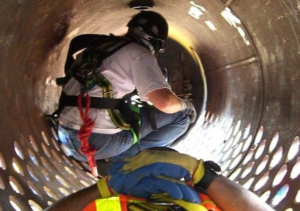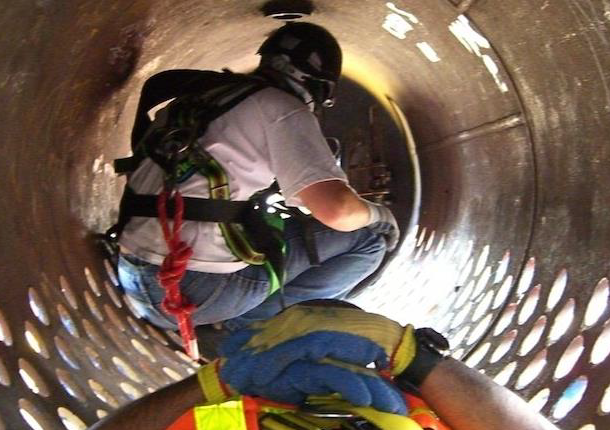by Mike Estep |
Have you considered the accident that you haven’t planned for?
 The number of jobsite fatalities in confined spaces as well as the number of rescuers who are dying attempting rescues in confined spaces continue to be on the rise. According to the Bureau of Labor Statistics (BLS), 1,030 workers died from occupational injuries involving a confined space from 2011 to 2018 (the most recent year for which data is available), with annual figures ranging from a low of 88 to a high of 166.
The number of jobsite fatalities in confined spaces as well as the number of rescuers who are dying attempting rescues in confined spaces continue to be on the rise. According to the Bureau of Labor Statistics (BLS), 1,030 workers died from occupational injuries involving a confined space from 2011 to 2018 (the most recent year for which data is available), with annual figures ranging from a low of 88 to a high of 166.
Although OSHA has recognized and implemented standards that address working in confined spaces, OSHA provides minimum regulatory standards to address confined space entries. Are these standards sufficient to provide the highest level of worker safety? Should employers be content with simply following the minimum acceptable standard? As a longtime safety professional, I believe it is critical to realize that, while existing standards set the bar at the minimum, our focus should be on implementing best safety practices that will assure the health and safety of employees working in confined spaces.
Best safety practices would outline definitive criteria for an effective on-site confined space program. Part of that on-site specific program should include an effective rescue plan and procedures. It is critical that employers establish on-site rescue procedures that are specific not only to the site but to each specific confined space. Space specific procedures are an integral part of an effective and successful confined space entry and rescue program.
Employers should not rely on outside emergency services as the only means to extract workers from confined space incidents. Outside emergency services should be a supplement to an already evaluated, tested, and effective on-site rescue program.
Rescue procedures are more than a written document. They are specific and defined criteria and procedures that need to be fully planned out, evaluated, and tested before being implemented as part of a rescue plan. Evaluating the effectiveness of a rescue team is a key component of a rescue plan. Rescue teams need to maintain the necessary levels of training for rescue personnel to ensure that the team can effectively perform a rescue in their site-specific confined spaces. Rescue teams need to be trained on a consistent and ongoing basis to maintain the required knowledge, skills, and abilities to prepare them for emergency situations.
Many companies with employees who work in confined spaces have not yet implemented the much-needed best safety practices of an effective and efficient on-site rescue plan, including an on-site rescue team and capabilities independent of the 911 system. It is critical that employers start realizing the need for non-entry rescue and an on-site rescue team.
—

Dr. Michael S. Estep, OSHP.CSMP.CSM.LSP.PhD., has 24 years of experience in the field of safety compliance, fire protection, emergency medical services, hazardous materials, and incident command. He has worked in both general and construction industry safety and compliance as well as in the specialty areas of hazardous materials and confined space entry/rescue. Mike teaches a wide variety of OSHA courses through the OSHA Training Institute Education Center.
Upcoming OSHA 2264 Permit Required Confined Space Entry Classes

